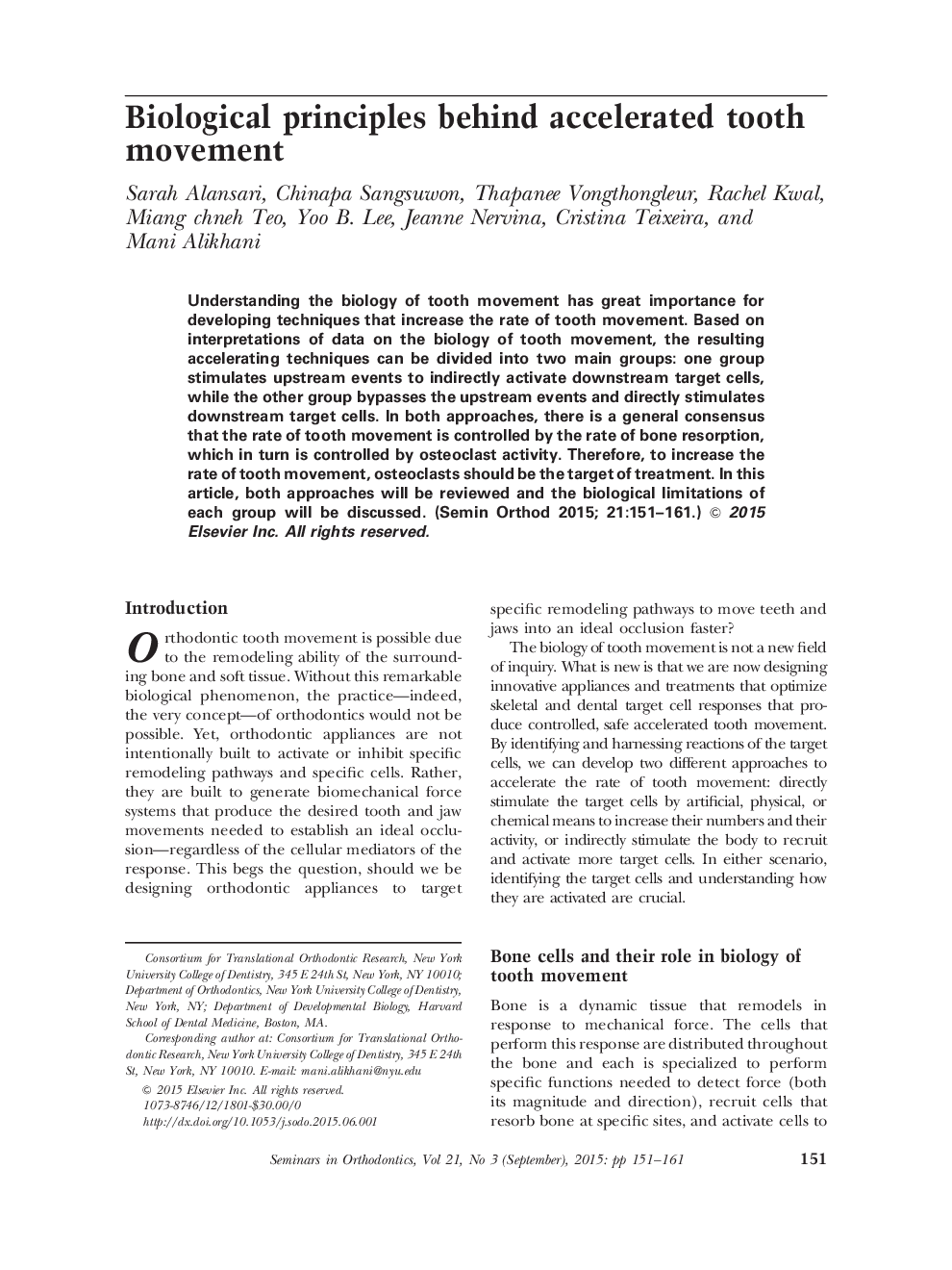| Article ID | Journal | Published Year | Pages | File Type |
|---|---|---|---|---|
| 6060009 | Seminars in Orthodontics | 2015 | 11 Pages |
Understanding the biology of tooth movement has great importance for developing techniques that increase the rate of tooth movement. Based on interpretations of data on the biology of tooth movement, the resulting accelerating techniques can be divided into two main groups: one group stimulates upstream events to indirectly activate downstream target cells, while the other group bypasses the upstream events and directly stimulates downstream target cells. In both approaches, there is a general consensus that the rate of tooth movement is controlled by the rate of bone resorption, which in turn is controlled by osteoclast activity. Therefore, to increase the rate of tooth movement, osteoclasts should be the target of treatment. In this article, both approaches will be reviewed and the biological limitations of each group will be discussed.
